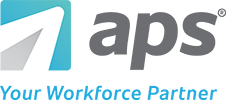7 Things To Look For In A Learning Management System
Learning Management Systems (LMS) provide employees with the educational information needed to bring a company to its full capability. According to Gartner, new employees who complete a formal onboarding plan are 58% more likely to stay with the company after three years. This retention is because educated employees are typically happier with their skills, feel valued, and have high job satisfaction.
An LMS is one of the most effective and efficient ways to maintain a competitive advantage in an evolving workforce. That’s why we’ve compiled a list of 7 things you can look for when vetting a learning management system.
1. Ease of Use
One of the first things to consider is the learning management system’s usability. Here are a few questions you can ask yourself when vetting a solution:
- How easy will it be for my employees to navigate through courses?
- Does this system have the ability to send certifications or scores promptly?
- Is the LMS customizable to my organization’s needs?
- How long is the onboarding process?
- Will I have dedicated personnel helping me with system implementation?
Make sure you keep usability at the forefront of your vetting process. Your organization will quickly adopt an LMS if it’s easy to use.
2. Reporting
Reporting capabilities are essential because they help you track the return on your LMS investment. In 2018 alone, total U.S. employee training expenditures amounted to $87.6 billion. Specific reports, including learner engagement and completion rate, indicate the success of your learning platform.
Real-time participation and event tracking in a learning management solution can help you determine whether you’re providing beneficial courses. Tracking can also help you gauge if employees are completing the studies assigned to them.
For example, if only 50% of employees complete a course, you need to determine how to improve your learning management program. However, without access to metrics, you can’t identify potential issues. Visibility to LMS data helps leaders create successful programs with measurable results.
Want to Know How to Calculate the ROI of Your LMS?
3. Functionality
Functionality is another vital aspect to keep in mind when vetting an LMS platform. Yet, how do you decide if an eLearning system is functional? For starters, check to see if the system is accessible to anyone, anywhere.
One of the benefits of a cloud-based learning management system is accessibility. Workers can learn whenever and wherever they want. This flexibility is especially crucial for organizations seeking to hire remote workers.
The ability to have 24/7/365 access to courses allows multi-location enterprises to streamline training. It also keeps employees from taking valuable work time to participate in mandatory 8-5 classes.
In addition to accessibility, a functional platform will be scalable to your needs. Is your web-based platform mobile optimized with blended learning capabilities for online or offline usage? If the system can’t grow organically with your organization, it may not be a long-term functional solution.
4. Customer Experience Model
Access to Support
If you’re going to create a comprehensive training program, make sure you have responsive and reliable customer support. Most training programs require advanced scheduling and shifting of employee workdays. If a problem occurs, you want immediate access to answers.
In addition to online vendor support, resource centers provide valuable tools. Resource centers or support hubs can help quickly answer questions you may have when operating the system.
Reviews and Rankings
If you’re still not sold on a vendor’s customer support quality, check out peer review sites. Companies like G2, Capterra, Software Advice, and Shortlister get actual customers’ perspectives on software support. They compile these and then house reviews on their platform for prospects to view.
In addition to peer-reviews, you can also check a company’s net promoter score (NPI’s.) An NPI indicates how likely a customer is to spread the word about the Learning Management System. Companies with a score of 9 or 10 have customers that are highly satisfied with their software experience.
5. Security and Privacy
An online learning system can host personal information, including home addresses, emails, social security numbers, and phone numbers. As such, your employees’ eLearning security and privacy is an essential element to LMS you cannot ignore. Ensure your learning management platform has privacy controls, password-protected logins, server locations, and an automatic backup system.
Another way to check if a provider is secure is to verify the system uses SCORM. The Sharable Content Object Reference Model (SCORM) is a set of technical standards for eLearning products. It essentially tells programmers how to write code. It also sets the expectations for how to package content and exchange data.
*Note: If the LMS has been around since before 2014, you will want to verify the system is AICC compliant. The Aviation Industry Computer-based Training Committee (AICC) was the first organization to set technical training standards for learning management programs. Even though they disbanded in 2014, any LMS training content before 2014 will still need to be AICC compliant.
6. Course Design
Instructional design is a crucial component to look for in a learning management system. It means the system will work with you to design courses to your specifications. This functionality is necessary when you’re training individuals with various types of learning styles.
Visual learners might need a program that incorporates charts and graphs. Meanwhile, audio learners might prefer recorded sessions where they can listen to the trainer talk.
Check to see if the LMS software you are vetting has course creation tools and content development. These features allow you to create course material that’s focused on individual learning experiences. It also offers the flexibility for you to brand your content to your company or department.
Another design component you need to consider is feedback. You want an LMS platform that can incorporate feedback questionnaires at the end of modules. That way, you can target where the coursework can improve. You must have an eLearning system that allows you to modify and design the courses your business needs.
7. Collaboration
In a Harvard study, 22% of trainees increased their performance when reflecting on lessons and sharing with others. Be sure that any LMS service you’re evaluating has the tools necessary to cultivate social learning. Collaboration among students can create a better understanding of the material and generate a sense of camaraderie.
Tools like discussion boards, chat, and FAQ sections encourage conversation between course takers. Meanwhile, leaderboards, social streamlining, and group note-taking hubs increase workforce engagement and accountability.
To promote continued collaboration, make sure the backend of your system has centralized resource management capabilities. You want the ability to categorize your course content with learning objectives. Also, look for streamlined accessibility so groups can access the same program at once. Creating a comprehensive library of content will save you time and energy in the long run.
The LMS Approach
Learning management systems replace traditional ways of storing documents, filing employee papers, and whiteboard training with a more efficient process. Managers can educate employees more effectively with centralized storage capabilities, customer-centric solutions, and secure access. Likewise, employees can better engage with and retain information when they have a functional platform and adaptive learning tools.
It’s easy to understand why eLearning is becoming the standard for employee training and certification in today’s workplace. An LMS is more than a functional tool. It’s a systematic approach to retaining employees and ensuring your people are working to the best of their ability.





